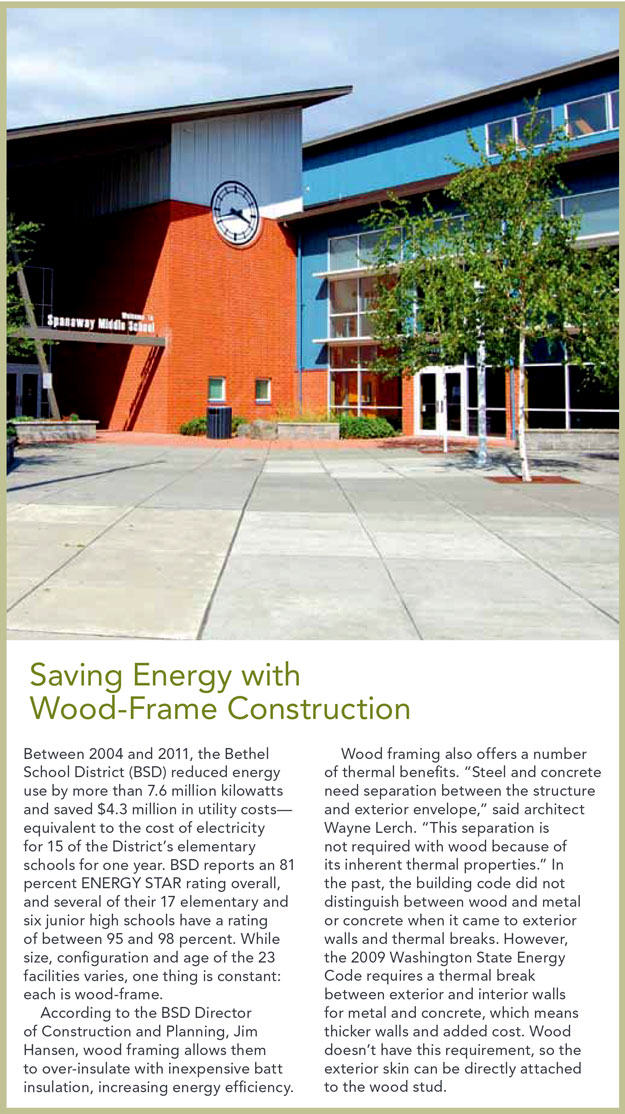Evaluating the Carbon Footprint of Wood Buildings
Wood: Solid Enough for Scrutiny
As the choice of building materials receives more scrutiny, and life cycle costs are more precisely analyzed, wood's environmental benefits throughout its use and re-use in buildings are being extensively documented.

Photo: Spanaway Middle School, Erickson McGovern Architects, Bethel School District
Low-Waste Manufacturing
On average, North American wood producers use 99 percent of every tree brought to the mill for processing. The term 'waste' is in fact largely obsolete in the context of today's North American forest products industry, as logs brought to U.S. and Canadian sawmills and other wood product manufacturing centers are converted almost totally to useful products. The sector has been making strides since the 1930s and, in terms of fiber utilization, has become a zero-waste industry.15
Low-Waste Design and Construction
Wood offers numerous opportunities for design and building professionals to reduce waste through design optimization, specification of recovered wood, and use of pre-sized framing members, or of pre-manufactured and engineered components. In many cases, clean job site waste can also be separated and taken to local recovery centers.
Adaptability and Service Life
The fact that wood buildings are easily adapted or dismantled and re-used adds to their environmental benefits. Although there are examples of wood-frame buildings that remain structurally sound after hundreds of years, North American buildings often have a service life of less than 50 years, regardless of material, because of changing needs or increasing land values.16 When one considers the embodied energy in these structures and the implications of material disposal, it is easy to understand why one of the tenets of sustainable design is that buildings should last 100 years or more. Partly this is a call for more durable materials, but another important factor in building sustainability is the use of building systems that can adapt to changing needs, either through renovation or deconstruction and re-use.
This is particularly relevant in today's non-residential sector, where the average life expectancy for buildings is 24 years, and yet 40 percent of buildings in the U.S. are more than 50 years old. With more than $3 trillion likely to be spent building or substantially renovating non-residential buildings over the next decade, building designers have a significant opportunity to reduce carbon emissions through increased wood use.









